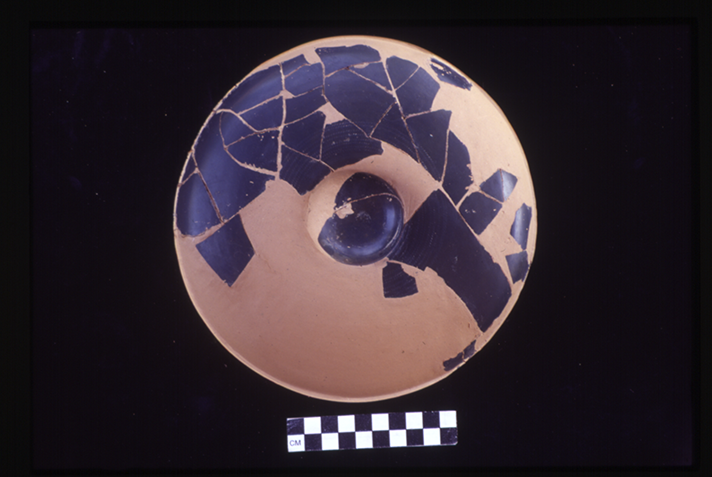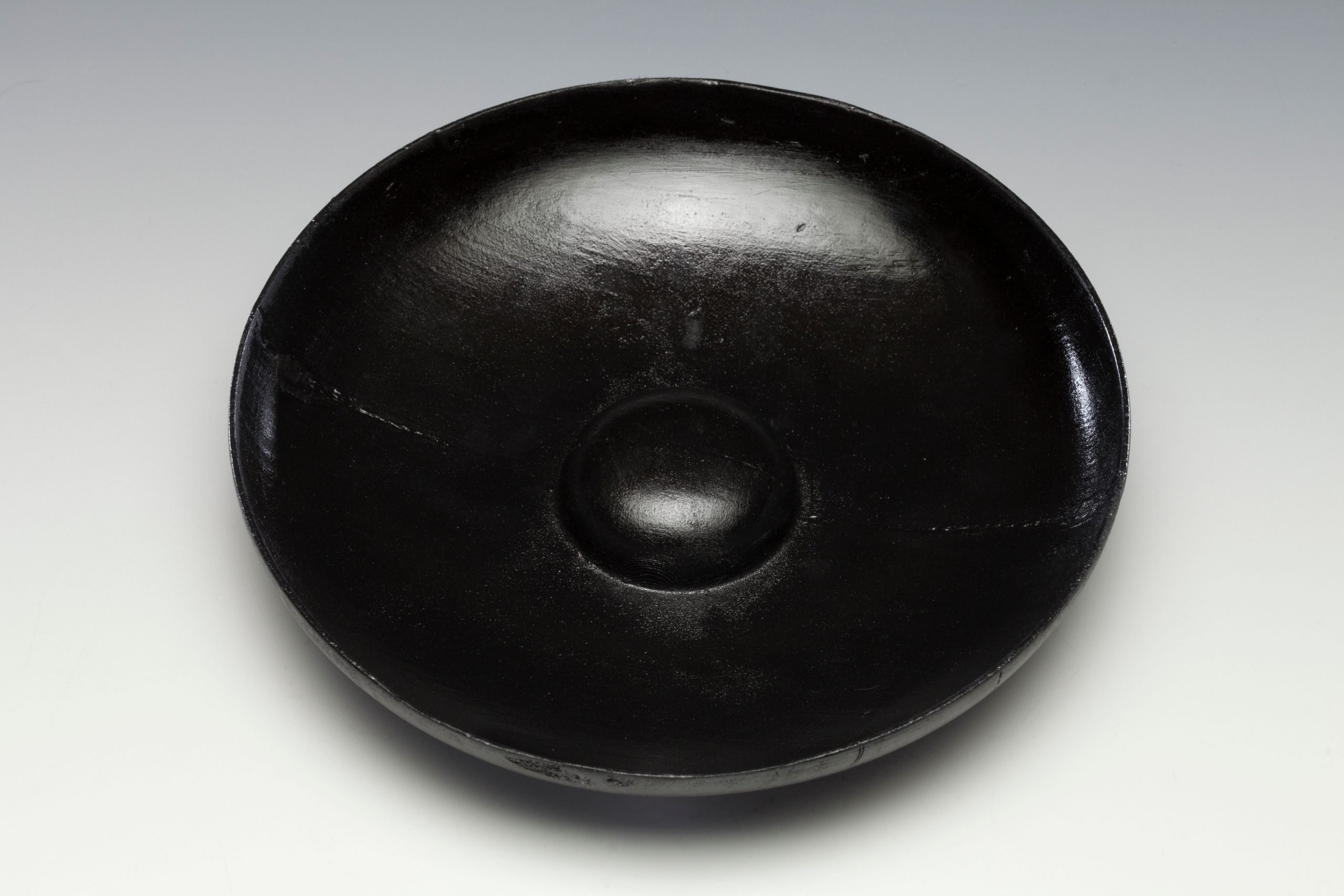
Etruscan Cetamura
Black-Gloss Umbilicate Patera
Period | Etruscan |
Year | ca. 250-200 BCE |
Material | Ceramic |
Location | Structure K |
Cet. Inventory | Inv. C-96-30 |
This Etruscan patera is a vessel typically used in religious ritual. Its saucer form would contain a serving of wine normally poured out for a deity. It seems to have been used to make an offering and then it was smashed into pieces that were thrown into the kiln to seek the favor of the god.
Prov. 74N/5E.20.9, etc. Structure K. Pres. location: Museo Archeologico del Chianti Senese, Castellina in Chianti. Diam. 20. Wt. 260 g (restored). Munsell: 7.5YR 7/4 “pink”
Thirty fragments of an Etruscan black-gloss umbilicate patera. Gloss is silvery or bluish black, well preserved; fine, soft buff-colored paste with no inclusions. Around the umbilicus eight rows of rouletting in a circular pattern.
The fragments of the vessel were found over two seasons within the deposit left in the Etruscan kiln, Structure K, at the time of its last firing. Most of the pieces are joining and constitute about 2/3 of the original patera. The vessel seems to have been intentionally broken, and the pieces scattered throughout the east and west halves of the kiln and even within the east stoking channel (praefurnium). A broken votive cup was found within the west praefurnium. The evidence suggests that the vessels were dedicated to the gods as part of an act of blessing the kiln as it was fired up to bake its load of brick, tile, and loom weights. Fragments of a second patera (“patera B”), with a different rouletting pattern, were also found in the kiln, perhaps relating to a similar ritual at another time of firing Structure K.
The fine bluish black gloss is consistent with examples from Volterra.
Dating: 220 (+ or – 30) BCE by form and context. Contemporary with Well Groups I and II (ca. 300-150 BCE)
Bibl. Morel type 2173d1. De Grummond et al., 1999, 170. Cetamura Antica 2000, 24 (no. 13).






